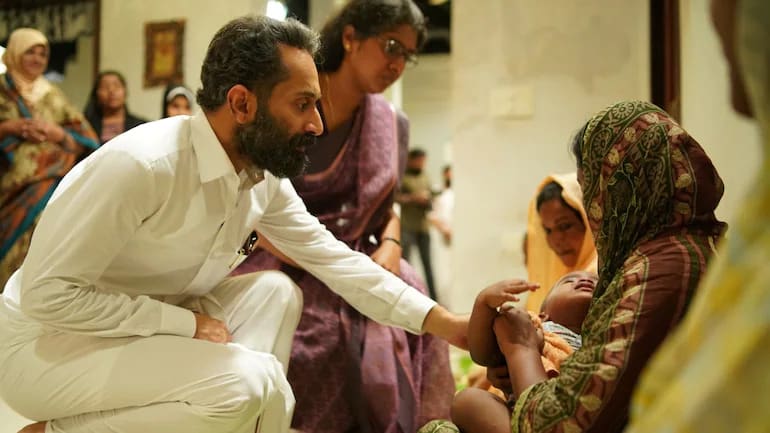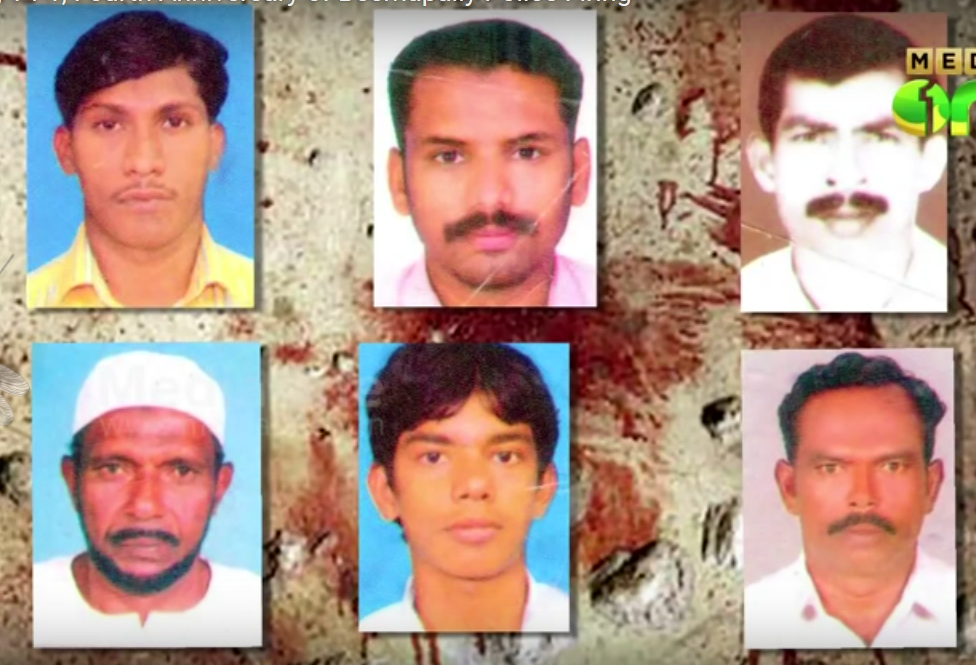
This is not a movie analysis or movie review by any means, since such a review would require another set of tools altogether. This is an attempt to look at the movie within its reel element and in connection to the events outside the movie.
By this time, Malik has garnered huge appreciation from both critics and audience, for its technical output and aesthetic value. The performances of the actors have been lauded too, Fahadh Faasil being the face of the cinema has rightly received his share of appreciation for his fine portrayal of the lead character through multiple shades of age. Some opinions have even gone to the extent of describing the movie as Fahadh Faasil’s own ‘Nayakan'(1987).
However, one may find Malik more similar to another Tamil movie than Nayakan. During multiple junctures in the movie, Malik reminds us of Vada Chennai, a 2018 action crime film by Vetrimaaran. If at all one dares to put up a comparison between both these movies, there should be a disclaimer upfront that it is indeed an unfair comparison, all things considered. Both the movies follow the pattern of a usual gangster movie, only that Vada Chennai is more close to home in terms of an ‘original’ narrative. Malik doesn’t seem to claim beyond what it presents, a tribute to the hitherto seen gangster movies.
The resemblance with Vada Chennai isn’t peripheral, the non-linear narrative told through multiple characters, the theme of violence and betrayal set in the background of a coastal region, the rise of a Don figure, even the flashback scene that starts with an aerial shot of the sea directly reminds us of Vada Chennai.
Both Vada Chennai and Malik deal with the coastal community, their collective vote power, the arm muscle of the local gangs and the negotiations they do with the power structures outside the region. Vada Chennai stands apart by taking a stand with the community within the movie, ie, even while showing the violence and betrayal within the community, the movie is empathetic towards the struggle of the community. Vetrimaran’s idea of violence as a result of systematic oppression can be seen in this movie too. At multiple junctures in the movie, the audience is equally confused as the hero in deciding their allegiance to the characters. The characters, though very violent by their actions, have different shades in which justice, ambition, revenge works as their motive, making it difficult for an easy judgement. Both the movies have similar climaxes where there is a state-supported corporate project that threatens the lives of the coastal community. In Vada Chennai, the influence of the malicious intent from the outside is highlighted and becomes vital to the tension building for the remaining plot.
However, Malik seems to focus only on Alikka, the lead protagonist played by Fahadh Faasil. Alikka seems to be the only sane voice in his community where the majority is shown as communal, radical and potential terror makers. Whenever the Muslim community is shown in the movies, the scene is complimented by uncomfortable stares and eerie music that hints at danger. The portrayal of the Muslim community is done using the same old trope of bad Muslim vs good Muslim, here Alikka. The extent of this bad portrayal even goes to create unnecessary scenes that don’t add to the totality of the movie. If there was something similar to the Bechdel test to assess the Muslim stereotypes, the portrayal in this movie would have passed with flying colours.
Again, this will be a political commentary of the movie, but then what does this mean to the movie’s craft. The movie is confused about the route it should take. Its structure keeps shifting away from the initial setup. The movie becomes ambitious in creating a landscape of political and social commentary where one cannot go forward without being rooted in the land’s politics. A genre movie doesn’t have the burden of carrying this social commentary, it can work within its genre and carry the larger than life extravaganza of a popular film too. Malik struggles with this. To put it plainly, Malik’s ambition to grow beyond its genre and become ‘political’ is counter-effective, making the political commentary socially regressive and the structure lacking any substance. The lack of a political understanding that goes beyond mere political correctness(which is absent too)is exposed through its angles since angles determine what to be seen.
The movie which is being lauded as an anti-establishment movie has failed in showing the intensity of any violence done by the establishment. The police shootout and the counter-violence that follows in the movie are shown one after the other in the movie. However, there is an interesting element in the composition of these shots. The shootout by the police is shown through the perspective of the victims, their harrowing cries, call for help, warlike destruction around and Alikka can be seen navigating through all these to reach his son who is already dead. In this scene, there is almost no shots or camera angle to show the police a.k.a the shooters, ie the origin of the violence is concealed from the screen. In Christopher Nolan’s Dunkirk(2017), a similar technique is used to hide the origin of bullets/shooting, while Dunkirk employed that to create the tension of a hidden enemy who could be anywhere, Malik doesn’t do so.
In the counter-attack that immediately follows, the violence and its origin are evidently clear. The perpetrators of this violence wreak havoc around, the intensity of the violence is also brutal, savage like to create horror in the minds of the audience. To compare it with Vada Chennai would be honest, where the state representatives don’t have a face that the audience would empathise with. The faceless state violence and the empathising face of the system, Joju George, who becomes a brutal victim to the violence of the Gang combine to quite conveniently balance the politics the movie boasts of preaching. The only character, other than the selfish political leader within the community, whom the audience can blame the state violence on is a police officer who is quickly killed off.


The movie’s tail end creates further confusion, as it works more as a statement by the filmmaker and less as a tail end to the cinema. The tail end stands apart from the movie which had ended with Hero’s death. Whether the shootout was a conspiracy by the state isn’t a concern as far as the plot is concerned. The tail end seems to be an advanced apology for any pro-state elements in the movie. This should be read in the context of the history behind the actual event in the movie. The Beemapally police firing which resulted in multiple deaths including that of a 14-year-old Muslim boy is the inspiration behind the movie. Ever since the movie’s release, there have been criticisms against the distortion of the actual events to favour a state narrative about the police killings. Hence, the tail-end is the final draw from the director to hold together a technically good movie with a weak script, with an even weaker political understanding.
Whether or not cinema can be completely objective in its storytelling is debatable. It is indeed a difficult task for a filmmaker to let their audience be without imposing their views, where Vada Chennai holds its form along with its politics, Malik struggles between both. The comparison with Vada Chennai doesn’t undermine the criticisms raised against the movie, neither does it ignore the criminalization of North Chennai done in the movie. The parallel reading of both the movies is to showcase the subjective yet contrasting position both the filmmakers took in their respective movies. Mahesh Narayanan fails to create a cinema that tells its story objectively or stays pure to its genre, neither does it stay true to the historical truth behind the cinema.



